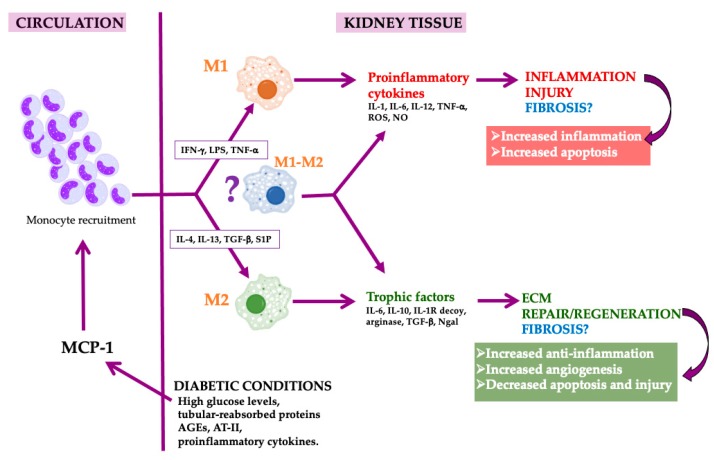Figure 1.
Macrophages in diabetic nephropathy. High glucose levels, tubular-reabsorbed protein, advanced glycation end products (AGEs), angiotensin-II (AT-II) and proinflammatory cytokines induce the production of MCP-1 by kidney tubular cells and podocytes. As a consequence, kidney monocyte recruitment is provoked. In the tissue, monocytes are converted in macrophages that acquire the M1, M2 or mixed phenotype depending on the inflammatory milieu and the molecules released by these different macrophage populations. M1 provokes injury and M2 are proresolution and regenerative macrophages that could induce fibrosis, while mixed macrophages could acquire different roles depending on the milieu. Macrophage image by Mikael Häggström, used with permission.

